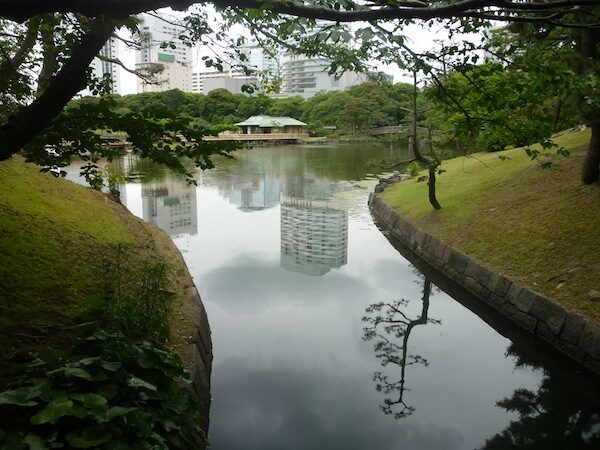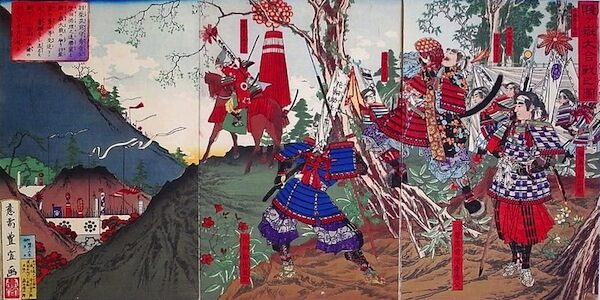The best way to see the old battlefield is to start at the Sekigahara Town History and Folklore Museum, (350 Yen entry) with it’s many fine exhibits and detailed information on the battle, its participants and the weapons and armor used. The museum also features a well-stocked souvenir shop with all manner of Sekigahara related goods for sale.

Bikes can be rented for 500 Yen per day from the museum, which will also provide you with a map of the battlefield. The base camps of the major warlords are clearly marked on the map and at each site, that
particular lords’ battle flags can be found fluttering in the breeze above stone monuments and information signposts.
Although the battlefield is quite narrow, it can still take a full day to visit the more important campsites. A suggested route would be to start from the Western leader, Ishida Mitsunari’s HQ atop Mt Sasao, below which the bulk of the fighting took place. Ishida’s war camp provides a great view of the entire battlefield. Lightweight replica samurai armor can be rented from the Community Center beside Mt Sasao, and so you can spend your day touring the battlefield looking like the warriors of old, in full armor, sword ready and mounted on your trusty,…rental-bike!

From there make your way south to the sites of the Shimazu, Konishi, and Ukita camps. Another small detour will take you to the Otani base and not far from it, the grave of Lord Otani Yoshitsugu, the only general to have committed Hara-kiri on the field that day! Pass under the expressway to the Wakasaka war camp, and above that, Mt. Matsuo, where the traitor Kobayakawa Hideaki set his war banners. Climbing Mt Matsuo will take at least 45 minutes, and it’s a long and strenuous climb, however the view from the turncoats HQ will be worth it!

After Mt. Matsuo, head north along the Eastern Forces’ line of defense, Fukushima, Todo, Kyogoku and Honda. From there head to the Head Mound! There are two Kubizuka Head Mounds, where the heads taken in battle were dumped in a huge pit. The Eastern mound is just beside the Sekigahara Railway Station next to the Ii and Matsudaira war camps, the Western head mound is 500 meters away, south of the killing fields. Wrap your tour up with a wander around the small park opposite your starting point, the museum. This was where Ieyasu commanded his troops from, and where he inspected the thousands of enemy heads taken by his men after the fight.
Sekigahara Warland is another interesting side trip. Just outside of the little township is a large park containing hundreds of life sized concrete figures re-enacting the battle. It’s a little kitsch, but it gives you an idea of who was where, and what it would have looked like. Although a little run down, Warland also features a small museum dedicated to the battle and containing a large array of samurai armor.

Study up on the battle before you go to really appreciate exactly what happened that bloody autumn day,
and its role in the forging of modern Japan.
>>The Battle of Sekigahara. The biggest, bloodiest battle of the Samurai. 01
Information
Sekigahara battlefield Access
The Sekigahara battlefield is only 50 minutes by car from Nagoya on the Meishin Expressway.
Regular Tokaido and local JR trains can be caught from Nagoya (40 mins), or Gifu.
Sekigahara Tourist Guide
English- http://www.kanko-sekigahara.jp/en/index.html
Japanese- http://www.kanko-sekigahara.jp/jp/index.html
Sekigahara Town History and Folklore Museum
894-28 Sekigahara, Sekigahara-cho, Fuwa-gun, Gifu-ken
English-http://www.rekimin-sekigahara.jp/english/index.html
Japanese-http://www.rekimin-sekigahara.jp
View Larger Map

